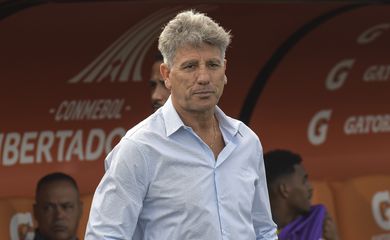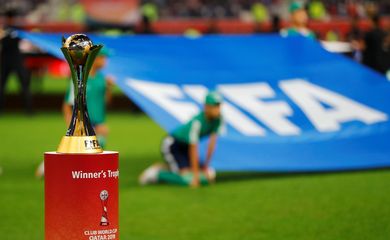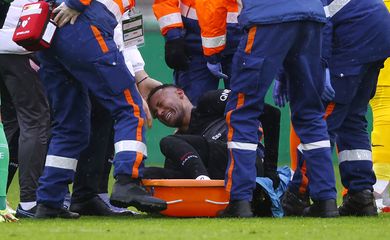Column - The challenging new cycle of Paralympic idol Antônio Tenório

He was hospitalized for 18 days, between March and April, due to the new coronavirus (covid-19), most of them in an intensive care unit (ICU) and with 80% of the lung involved. Two weeks after leaving the hospital, Antônio Tenório has already resumed training and shortly thereafter traveled to compete in Baku (Azerbaijan) and Warwick (United Kingdom), thinking about the Paralympics in Tokyo (Japan). Just now, after the event on Japanese soil, the biggest name in Brazilian Paralympic judo has finally managed to start the post-covid treatment for real.

“I've been doing light training at my gym, until I fully recovered. I would say that I am in my 50%, 60%”, reported the judoka to Agência Brasil .
Owner of six Paralympic medals, four gold, one silver and one bronze, Tenório hit the crossbar in his quest for his seventh achievement. Overtaken in the semifinal of the 100 kg category by North American Ben Goodrich, he defeated Uzbek Sharif Khalilov by a wazari (a move in which the athlete is knocked down with part of his back on the mat) within three seconds of the end of the fight for the bronze, when he also took a wazari . The dispute ended in the golden score (gold point), where he was defeated.
“I was very proud of the performance [at the Paralympics], but that alone is not enough. If I had come with the medal, I wouldn't be unemployed”, lamented the Brazilian.
At 51 years old, Tenório sees himself able to compete in the Games in Paris (France). The first post-Tokyo challenge will be the Grand Prix of Paralympic Judo, in December, at the Paralympic Training Center in São Paulo. A good performance will be essential for him to be called up again to join the national team of the sport, which would help him in the search for sponsorships that keep him in the fight for a spot in 2024.
The new cycle, however, will have a fundamental difference. Athletes with total visual impairment (class B1, renamed J2) will compete separately from those with low vision (class B2 and B3, now J1 only). On the other hand, some separations by weight were suppressed. Each class will have four categories. Before, in all, there were seven for men and six for women. The new system is valid from 2022. With this, this year's Grand Prix will still be in the old model.
A study started in 2016 by scientists at the Free University of Amsterdam (Netherlands) guided the changes. It was based on consulting athletes (active and retired), coaches and managers, and five other analyses: two on the impact of visual impairment on combats and three on sports performance. The International Federation of Sports for the Blind (IBSA) established a committee to implement the changes.
The main conclusions of the studies were that visual impairment impacts performance on the mat, even if athletes start the fight with the grip on each other's kimono (which is a differential of Paralympic judo, compared to conventional) and that there is a disadvantage for judokas with more severe visual impairment in fights against rivals who, for example, see figures. The separation between completely blind competitors and those with low vision was one of the recommendations.
Tenório fits into the former B1 class (now J2) and was totally blind at age 19 due to an infection in his right eye. He had already lost sight in his left eye at age 13, hit by a castor bean seed, which detached the retina. The judoka recognizes that athletes who can define figures or images have an advantage over athletes like him, and he cites the defeat in the fight for bronze in Tokyo. The Uzbek who surpassed him in Japan was a B3 class with the least visual impairment.
“If he hadn't seen [a little], he wouldn't have found me”, said Tenório, who pondered: “A well-trained B1 will face a B2 or B3 calmly. A B3, who already learns by seeing, is different [from athletes who learn judo blind]. I've always been B1, but I was training when I got visually impaired, so I don't feel much difference [from fighting someone with low vision].”
The Brazilian will, of course, be impacted by the changes, as he will start fighting only with blind judokas, like him. Tenório, however, believes that the reduction of categories, as a result of class separation, hinders rather than helps. In men's, four divisions remained: up to 60 kg, up to 73 kg, up to 90 kg and over 90 kg. Those for women are: up to 48 kg, up to 57 kg, up to 70 kg and over 70 kg.
“The way it was done, it doesn't bring any advantage to B1, as they killed three categories. Including mine [up to a hundred kilos]. A person [slightly above] 60 kilos may have to fight someone 70 kilos. Or someone weighing 90 pounds face someone over a hundred. It's not fair, as you end up competing with someone who is physically stronger. If the seven [male] categories were kept, it would be fairer. Can you imagine the champion of my division [British Chris Skelley, who is B2] having to face the Georgian [Revaz Chikoidze, silver in Tokyo in the category over 100 kilos, also B2], with almost 180 kilos? No matter how technical a judoka is, it's impossible”, analyzed Tenório.
At this time, the four-time champion would compete between athletes weighing over 90 kilos, where he would have as his rival his compatriot Willians Araújo, silver in the Paralympic Games in Rio de Janeiro, in 2016, who already competed with judokas weighing over 100 kilos. The way out would be for Tenório, currently at around 100 kilos, to gain mass to compete with heavier opponents or to lose weight to less than 90 kilos and drop in category.
“At my age, weighing 120 or 130 kilos would be harmful to my health. It wouldn't work. In 2015 I managed to lower it to 90 kilos. It wouldn't be impossible, but it would need quality training and support”, he concluded.
Text translated using artificial intelligence.







